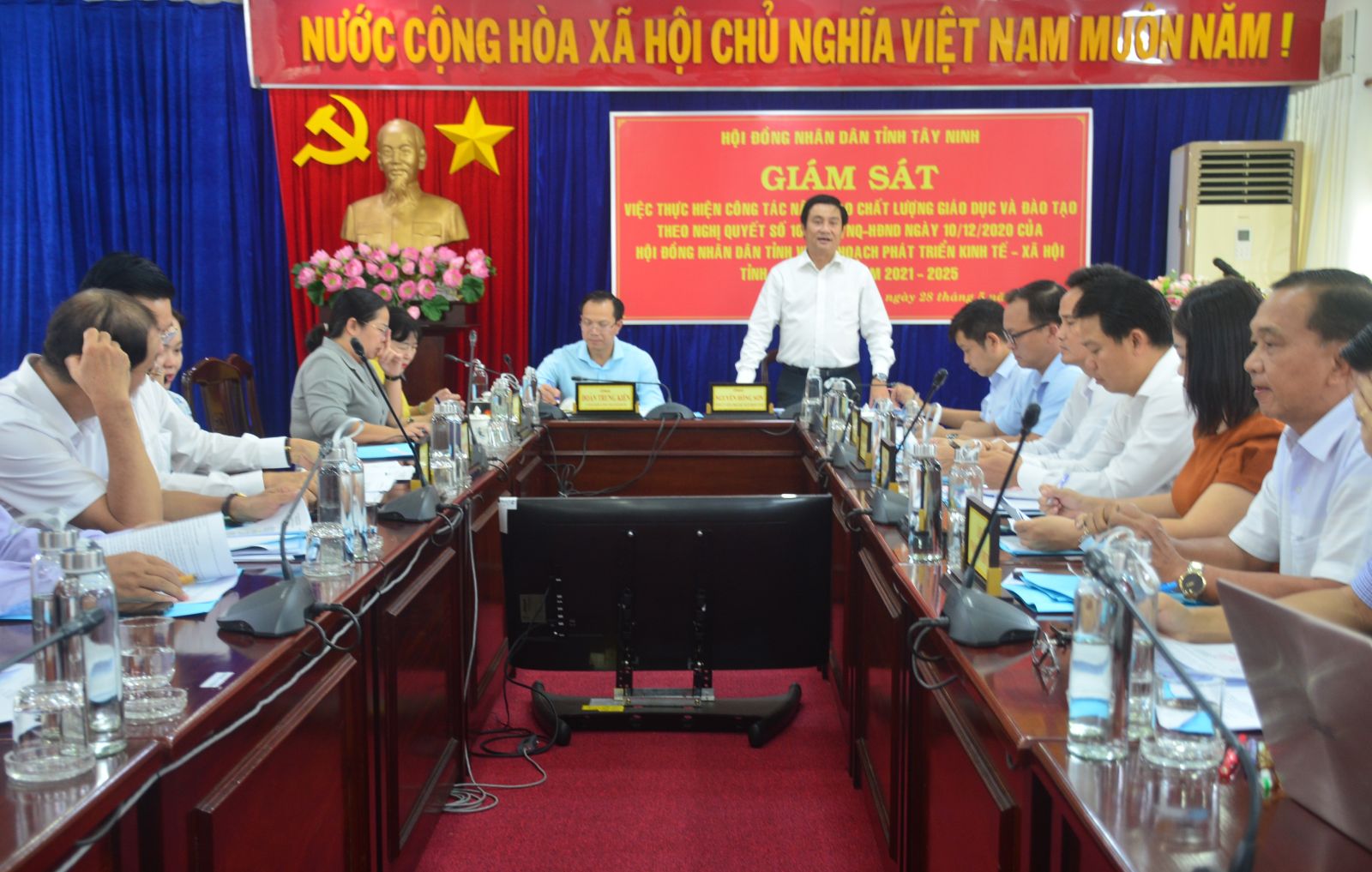
The quality of generaleducation has changed.
Reporting to the monitoring delegation, the leaders of the Department of Education and Training informed that Tay Ninh province has 449 schools, 241,163 students, 12,742 managers and teachers. As of December 2024, the whole province has 237 schools meeting national standards, including: 73 preschools, 105 primary schools, 49 secondary schools, and 10 high schools.
The quality of general education has many positive changes, demonstrated by the high school graduation rate of 98.87% and the rate of admission to universities and colleges increasing steadily each year, reaching over 60%. The work of discovering and nurturing excellent students continues to be focused on, creating conditions for students to develop their talents and creative thinking. The number of students winning prizes in provincial and national competitions for excellent students has increased, with many students winning prizes, contributing to affirming the quality of the province's leading education.
Tay Ninh maintains universal preschool education for 5-year-old children, universal primary education level 3, universal lower secondary education level 2 and meets the standard of eliminating illiteracy level 2, contributing significantly to improving people's knowledge and sustainable development of local human resources.
In the 2021-2024 period, the investment, management and use of facilities and teaching equipment at educational institutions in the province will be directed and effectively implemented, contributing to ensuring conditions for effective implementation of the 2018 General Education Program.
From the 2020-2021 school year to the 2024-2025 school year, the organization of purchasing teaching equipment for the 2018 general education program will be carried out through open bidding, general procurement for the whole province from the budget estimate assigned to the Department of Education and Training. Equipment procurement will be carried out in accordance with current regulations, meeting the minimum needs according to the 2018 General Education Program.
Facilities, equipment, utensils, and toys have been invested in construction and procurement in the direction of standardization and modernization. The school system and basic classrooms meet the learning needs of the people; 2-session/day classes are developed and expanded in all residential areas; facilities and equipment for basic teaching and learning meet the minimum needs according to the 2018 General Education Program. Classrooms and functional rooms ensure that each grade has enough 1 room/class to ensure 2 sessions/day, and at the same time organize compulsory foreign language and computer teaching according to the 2018 General Education Program.
However, “the minimum rate of teaching equipment at all levels is still low, the rate of streaming has not met the regulations of the Central Government, the rate of mobilizing children to attend kindergarten is still low. The socialization of education is still limited, the mobilization of social resources to contribute to education is still low; the implementation of the project of socialization of education is slow, prolonged, and does not meet the requirements. Up to now, the implementation of the organizational arrangement has required a request for a temporary suspension of implementation. The development of documents to implement the Central Government's documents related to education and training and vocational education is still slow. The quality of implementing the Preschool Education Program in most private preschools, kindergartens and independent groups and classes has not been highly effective" - the Department of Education and Training pointed out the limitation.
The quality of continuing education is still limited.
Regarding the quality of preschool, general education and continuing education (GDTX), the monitoring delegation assessed that the rate of mobilizing children to attend classes at preschools in the province tends to increase, especially at the age of 5, reaching a high level and remaining stable, demonstrating the improvement in parents' awareness and the effectiveness of the education sector's propaganda and mobilization work.
The rate of mobilizing 6-year-old children to enter grade 1 in the province is always 100%, showing that the mobilization work to go to class is carried out effectively. Over the years, the number of students who have not completed the program has gradually decreased. Notably, from the 2022-2023 school year, the rate of grade 5 students completing the primary school program will reach 100%.
The quality of secondary education in the 2020-2024 period has changed positively. The percentage of students with good academic performance or better accounts for about 60%-65%, the percentage of weak students has decreased over the years. The percentage of students with good conduct remains high (over 86%). The secondary school graduation rate has remained 100% continuously for 4 years.
From the 2020-2021 to 2023-2024 school years, the quality of high school education has improved significantly. The rate of weak students has gradually decreased from 3.6% to 1.9%. The high school graduation rate has always been high, from 98.2% to 98.8%, reflecting the effectiveness of teaching, reviewing and supporting students.
The quality of education in the continuing education system is not high. The percentage of good and excellent students fluctuates at a low level, while the percentage of weak and poor students tends to increase, especially in the 2023-2024 school year (accounting for 18.1%). The percentage of good conduct students is high but not stable between years. The high school graduation rate in the continuing education system remains from 83.78% to 90.68%.
The work of discovering and nurturing excellent students in the province has received investment and has had positive changes over the years. The number of students winning provincial and national awards has increased steadily. The 2023-2024 school year recorded the highest number of excellent secondary school students and national awards in 4 years.
Guarantee to spend 20% of the budget
After listening to the summary report, the members of the monitoring team requested more specific information about the investment in teaching equipment. What are the solutions for the lack of teachers? In addition to preschool teachers, there are preferential policies to attract and resolve the shortage of general education teachers. Many schools currently have separate locations, so it is advisable to rearrange them to make them more compact, because some locations only have one classroom, not too far from the main location. The education sector needs to further assess the professional qualifications of teachers in implementing the 2018 General Education Program.
Investment in teaching equipment needs to be re-examined to be reasonable, not just focused on a few schools. Surveys show that many schools currently have both inadequate and degraded teaching equipment. Current training and vocational training effectiveness are not as expected, both in quantity and quality. There are opinions suggesting that the education sector properly evaluate the quality of education. In reality, there are many students with very poor academic performance but still "progressing to the next grade regularly".
Explaining some contents, the leader of the Department of Education and Training said that the application of information technology and "digitalization" of the sector's activities has been well implemented, smoothly, thereby reducing administrative procedures and costs. Regarding the construction of national standard schools, the new regulations of the Ministry of Education and Training have higher requirements while many schools in Tay Ninh have been recognized as meeting standards for a long time, schools that have not been recognized will have more difficulties, because there are schools built according to old standards. The division of vocational students into unqualified ones comes from many causes, this story is not new.
Speaking at the meeting, Vice Chairman of the Provincial People's Committee Doan Trung Kien acknowledged that during the period from 2021-2025, the proportion of expenditure on education always ensures 20% of the total budget expenditure, which is not something that all provinces and cities can do. The monitoring delegation pointed out that the results achieved and limitations have both objective and subjective causes. In the (official) report, only basic limitations should be retained for correction, while minor limitations may not need to be retained.
In conclusion, Vice Chairman of the Provincial People's Council Nguyen Hong Son assessed that the investment in building schools and teaching equipment has been given attention, and vocational training has achieved remarkable results. However, the procurement and bidding of teaching equipment still faces many difficulties, and many schools lack machinery and working equipment. The policy of channeling students to vocational training has received many efforts, but the rate of students participating in vocational training is still low. The Provincial People's Council proposed that the Provincial People's Committee increase budget allocation to the sector, thereby contributing to improving the quality of education.
Viet Dong
Source: https://baotayninh.vn/bao-dam-chi-ngan-sach-cho-giao-duc-khac-phuc-han-che-trong-nganh-a190667.html




![[Photo] Prime Minister Pham Minh Chinh chairs a Dialogue with businesses and business associations](https://vphoto.vietnam.vn/thumb/1200x675/vietnam/resource/IMAGE/2025/5/31/b606d6f6ff584fa28af9f353c91bf15d)

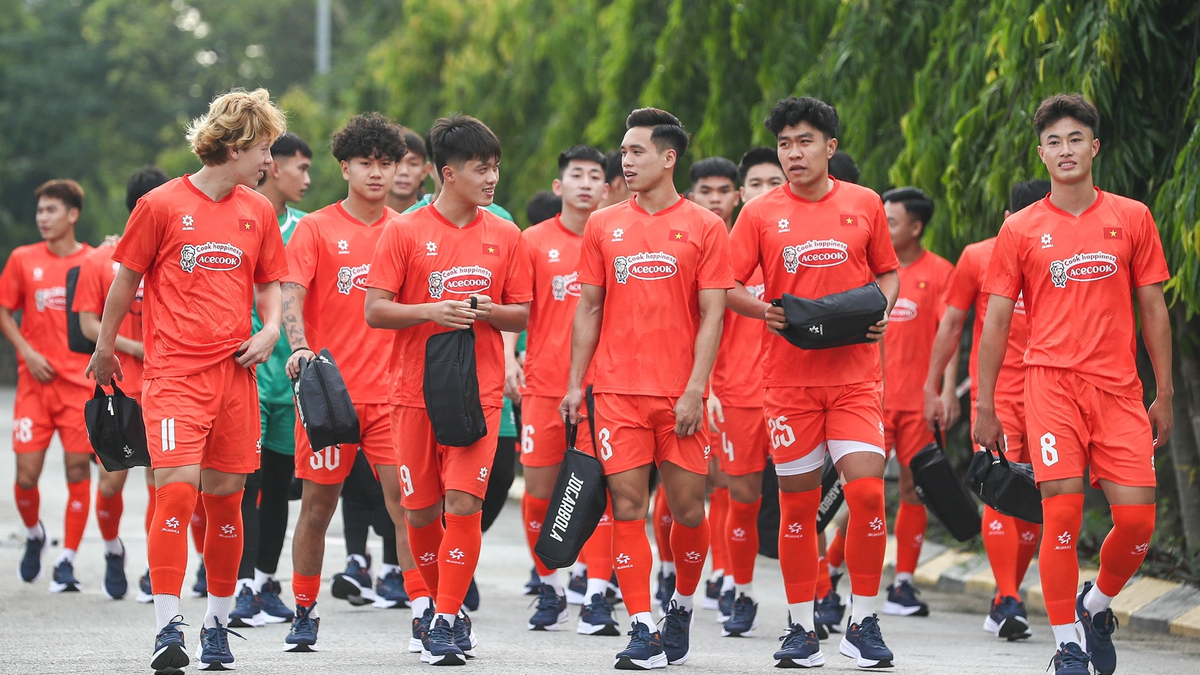
![[Photo] Crane falls on container truck and car at traffic construction site](https://vphoto.vietnam.vn/thumb/1200x675/vietnam/resource/IMAGE/2025/5/31/a8d3ae08da324cfe8ee406174c0eacc4)
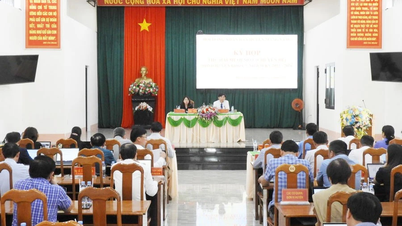

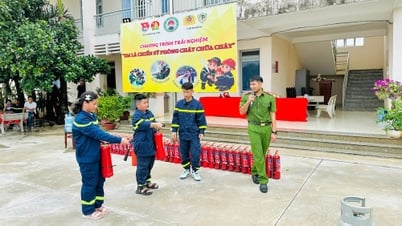

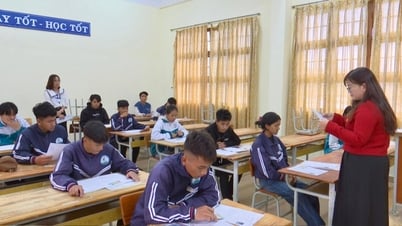









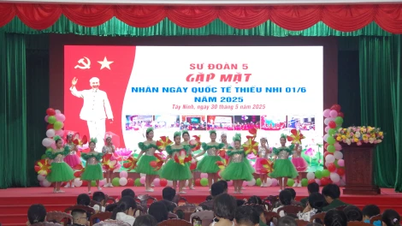

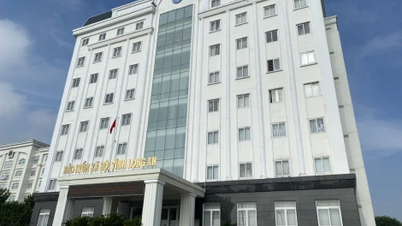

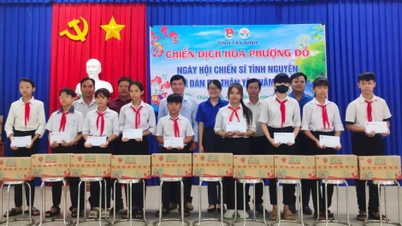
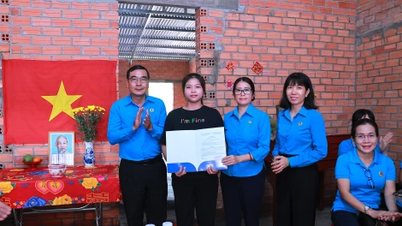
![[Photo] Emotional and proud flag-raising ceremony and military review on Truong Sa island](https://vphoto.vietnam.vn/thumb/1200x675/vietnam/resource/IMAGE/2025/5/31/9b52525fce6f433083cd0a5bfee59f49)




































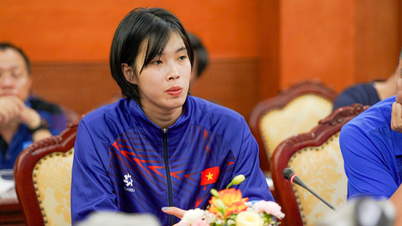




















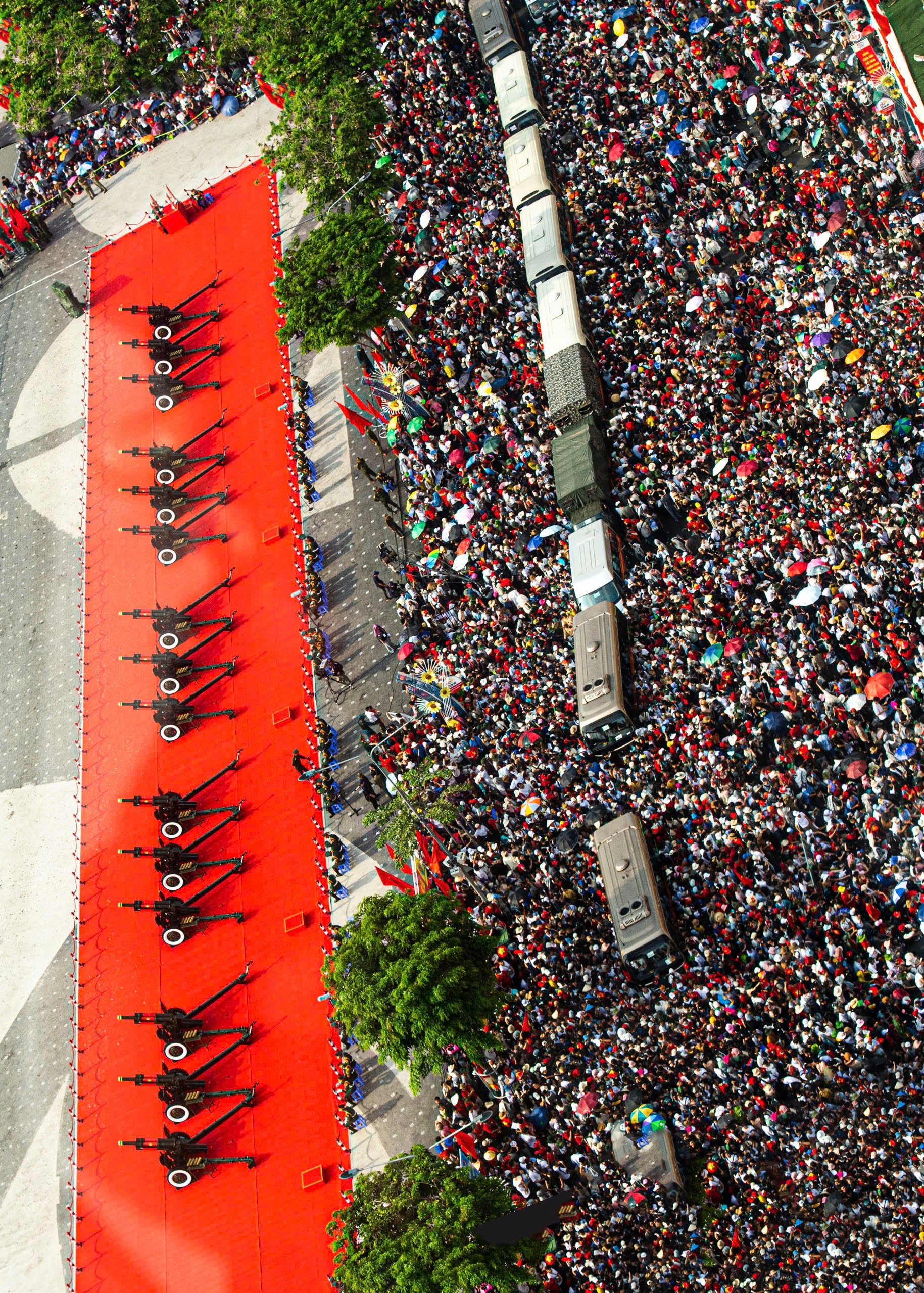



Comment (0)